TIME FOR SPOILERS!
“It’s just a ripoff of Star Trek IV: The Voyage Home!”
I’ve read versions of that complaint in the comments from multiple STAR TREK: PICARD detractors on Facebook this week. And believe it or not, they’re not entirely wrong…but not for the reason they think!
Y’see, nearly ALL Star Trek time-travel episodes and movies where someone goes back to old Earth of the 19th, 20th, or 21st century tell almost the EXACT SAME story! Don’t believe me? Let’s take a look at the following list…
- “Tomorrow Is Yesterday” (TOS)
- “The City on the Edge of Forever” (TOS)
- “Assignment: Earth” (TOS)
- Star Trek IV: The Voyage Home
- “Time’s Arrow, Part II” (TNG)
- Star Trek: First Contact
- “Past Tense” (DS9)
- “Little Green Men” (DS9)
- “Future’s End” (Voyager)
- “Carpenter Street” (Enterprise)
Now think back to all of those stories and tell me if they each share most if not all of the following plot elements…
- Something gets “broken” in the past and needs to be fixed before the time traveler(s) can come home.
- The method of time-travel is explained and often (but not always) shown…usually in a dramatic fashion.
- The time-travelers will split up into smaller teams, each with its own mission. This allows for cutting between an A-story and a B-story and possibly a C-story.
- Often, one of those teams remains back on the ship (assuming there is a ship), either in the past or still in the future.
- There’s at least some comedy relief where our heroes from the future don’t quite understand something from the past (but we do, and it’s funny).
- There’s usually a scene involving technology from the future that is either observed being used, or else it is lost and/or stolen. Often, this piece of equipment needs to be retrieved and/or destroyed lest it change the past in some way.
- At least one person gets separated from their team. Frequently, this person is either injured and/or is captured and must be rescued.
- The time-traveler(s) connect(s) with at least one special person from the past who can help them in some way. This character(s) becomes very well developed in the story, ultimately becoming someone we care about and can relate to/root for.
Not every time-travel story will contain every trope, but you’ll be amazed when you think about it just how many of these beloved episodes and movies share most of the same plot elements. And indeed, think about other sci-fi like the Back to the Future trilogy and see how many of those tropes you remember seeing there, too.
And speaking of Back to the Future, this third episode of the season, “Assimilation,” along with next week’s fourth episode, were both directed by LEA THOMPSON, the actress (and Trekkie!) who played Marty McFly’s mother in the first two Back to the Future movies and his great-great grandmother in the third. So she’s no stranger to time-travel stories!
Let’s take a look at how this latest episode of Picard follows the tropes of these Star Trek “back to Earth’s past” episodes and movies…
SO WHAT’S “BROKEN”…?
Sometimes we know upfront what’s “broken,” as with Picard and crew racing to stop the Borg from preventing Zefram Cochrane’s first warp flight of the Phoenix in First Contact, or Archer and T’Pol having to find the Reptilian Xindi in 2004 in “Carpenter Street.”
Other times, the travelers inadvertently screw something up in the past and have to fix it, like the Enterprise being detected by Captain Christopher’s plane and accidentally destroying it in “Tomorrow Is Yesterday” or Sisko inadvertently causing the death of Gabriel Bell and having to take his place in the Bell Riots of 2024.
And then there are stories where the travelers don’t know what they have to do until they’re back in time and then figure it out, as with Edith Keeler in “The City on the Edge of Forever.”
In this Picard storyline, it’s obviously going to be the third scenario of knowing nothing about what needs to be fixed. The team must find this “watcher” in order to figure out what they need to do. Then they need to actually do it and finally get back to the future. Sounds easy enough!
LET’S DO THE SLINGSHOT AGAIN…
Thanks to its long history, Star Trek has established countless means of time travel: warp engine cold restart, Guardian of Forever, timeship(s), chroniton particles, Orb of Time, Borg temporal rift, and a host of other methods (everything except a phone booth!). But one of the most well-known is the ol’ slingshot around the sun at high warp—the Star Trek equivalent of putting instant coffee into a microwave oven…
Previously, the slingshot calculations were done by Spock’s super-brain, but this team doesn’t have a Spock. So they need a Borg Queen instead (you work with the tools you got, people!). She’s kinda the equivalent of a flux capacitor in this scenario: VERY important and needs a recharge, which creates an interesting dynamic because she’s also the biggest threat to them, but they must keep her alive and safe.
I will say that I was very impressed by how closely the episode was able to recreate the “surreal mind-trip” that accompanied the slingshot in Star Trek IV. I always thought that sequence was kinda artsy and a bit cheesy, so Lea Thompson would have been totally justified either not showing it or else doing a different kind of sequence. But instead, she honored canon while actually making it look a LOT less cheesy without those ceramic heads of the crew and the reeds sticking out of the water.
BREAKING UP THE BAND…
After spending all of last episode getting the band back together, it’s time to split up again to go on two different missions. But first, Elnor dies. This came as a bit of a shock to me for two reasons. The first is that Elnor is a main character, and this show isn’t The Walking Dead or Game of Thrones where any character—even major ones—can be killed off at any time. Or is it?
Granted, Elnor is likely coming back at some point later on (hopefully when the timeline is restored or as a conciliatory gesture from Q) because he’s just too good of a character. But for now, Elnor is out of the picture—meaning they don’t have to worry about explaining that his ears got caught in a mechanical rice picker or fear that Mr. Absolute Candor will blow their cover in the past.
Raffi seems to be the only one truly devastated by Elnor’s death…although it kinda makes sense. Picard obviously feels closer to Elnor than any of them, but as leader, he can’t afford to wear his heart on his sleeve like Raffi does. Rios is a macho tough guy, as is Seven (maybe even more so), and neither tends to get overly attached to people or emotional. I was a little surprised that Agnes wasn’t a bit more affected, but she did have other more immediate pressures concerns on her gifted mind at the moment.
Oh, and the other reason I was surprised by Elnor’s death? Those Confederation guns seem to only disintegrate their targets. Elnor should have been atomized instantly when the Magistrate shot him. Of course, that would have eliminated his powerful death scene and Raffi’s reaction. So I looked the other way on that little nit-pick.
Anyway, they split into two teams, which quickly become three (more on that shortly). But this allows for quiet explorations of relationships through pairings. It’s hard to individually define characters when they’re bunched together in larger groups. So last episode, we focused in on certain smaller groupings before getting everyone together at the end. Now the pairings are different—mix and match, as it were—giving Raffi and Seven a chance to slowly (re)build their relationship rather than just throwing it at the viewers in the last 15 seconds of the first season. That was totally a mistake by the writers in the season one finale, and they obviously realized it, trying to fix it this season.
And then there’s Picard and Agnes…
MEANWHILE, BACK ON THE SHIP…
While Raffi, Seven, and Rios head off for sunny L.A., Picard and Agnes stay with the Borg Queen. Of all of the characters on this show, Picard and Agnes are arguably the oddest couple. And so this allowed for some really fascinating scenes. And frankly, I also think the pair of them are the two most gifted actors on the series—although the entire ensemble is excellent. But the performance ALISON PILL gave as she connected with the Borg Queen through her subconscious mind was simply amazing! And SIR PATRICK did his usual mesmerizing best, drawing on Picard’s history with the Borg and their queen as Locutus to add tension and deep-rooted concern to counter Agnes’ (over)condfidence.
But most pleasantly surprising of all was ANNIE WERSCHING’s portrayal of the Borg Queen. Up until the end of this episode, the Queen seemed mostly harmless, not nearly as threatening she’d been in First Contact or Voyager. Her random muttering was eerie, of course, but it isn’t until she “powers up” that the Queen becomes absolutely terrifying—arrogantly “negotiating” knowing that she holds all the cards. But she doesn’t, and suddenly Agnes steps up with an unexpected confidence and arrogance herself, as she has outwitted the Queen! Perhaps they each absorbed a little of the other…I don’t know. But it’s going to be fascinating to watch in subsequent episodes.
Indeed, the Borg Queen herself has the most chilling line I’ve heard in any Star Trek for a very long time: “What you have just done here is more difficult and vastly more dangerous than you realize…you’ve impressed me.” Combined with the ominous music (all of the music in this series is incredible, by the way, have you noticed?), this scene took the darkness of this episode to a whole other level. Good thing we also get…
A LITTLE COMEDY RELIEF!
There’s actually not much about this story that’s funny. Elnor has already died, and Raffi is devastated. The La Sirena has crashed, and the Borg Queen isn’t exactly the sweetest, most helpful person on the ship.
This episode could have easily gotten bogged down in a morass of emotional intensity, but instead, once we get out to L.A. (where I live, by the way, and yes, sometimes wildfires do burn that close to the city—I took this photo in 2013 just before high-tailing it down from the Griffith Observatory!), we got a sprinkling of humor. It wasn’t enough to turn this into a romp like The Voyage Home the DS9 episode “Little Green Men,” but we did get a funny scene where Seven is trying to charm the building security guard with her hot blonde looks and sparkling personality while repeatedly getting the words wrong for taking a picture.
And of course, later on we have Rios enjoying some very lighthearted banter with the Dr. Teresa and her son Ricardo (more on that below). Also, Raffi’s takedown and subsequent mugging of the mugger quickly and effectively solved one of the other common tropes of time-travel stories to old Earth in Star Trek: being from the future and finding money to use in the past.
Now, the other side of comedy relief, but also frequently a trope, is some kind of enlightened social commentary on the past (our present)…since this is Star Trek, after all. Spock says, “To hunt a species to extinction is not logical.” Benjamin Sisko leads a riot of homeless people demanding humane treatment. So it’s not surprising when Raffi says, “A backdrop of hope meets hopelessness. You’re killing it, 2024. Y’know, I’ve never been able to understand how a society could exist with so many contradictions and not collapse sooner than it did.”
A little heavy-handed and pontificating? Perhaps. But Star Trek has always forced us as a society to take a long look at our shortcomings: racism, sexism, poverty, war, greed, overpopulation, pollution…the list goes on. This kind of preachy commentary trying to make our society better is a feature of Star Trek, not a bug.
KEEP A CLOSE EYE ON YOUR STUFF!
Ever since a down-on-his-luck hobo picked up McCoy’s phaser and accidentally disintegrated himself (good thing HE wasn’t as important as Edith Keeler!), keeping future technology out of the past has been an element of most time-travel stories…unless you’re “inventing” transparent aluminum, of course! But seriously, phasers have been taken by military authorities in the 1960s and the 1980s. Photographic evidence of the U.S.S. Enterprise had to be destroyed. The universal translator, the Doctor’s holo-emitter, even some leftover Borg nanoprobes have all threatened to change the course of human history.
And now Rios has lost his comm badge. As they used to say on the Battlestar Galactica reboot: “All of this has happened before, and it will happen again.”
RIOS TAKES THE FALL, BUT WILL HE FALL FOR DR. TERESA?
Rios is the Chekov of this story but with a BIG difference! In Star Trek IV, Chekov is captured by the authorities, runs away, falls and hits the ground hard, and needs medical attention and eventual rescue. But with Rios, the order is completely different: Rios falls FIRST and is injured hitting the ground hard, then he gets medical attention, and finally gets captured by the authorities AFTER all of that…most likely needing a rescue.
Okay, maybe not so much of a “big” difference, but remember that Kirk is captured on the air base in “Tomorrow Is Yesterday,” Kirk and Spock are captured at Cape Canaveral in “Assignment: Earth,” Sisko and Bashir are imprisoned with the homeless in the Sanctuary District in “Past Tense,” the EMH is captured by Henry Starling in “Future’s End,” and Archer is captured (albeit purposefully) by the Xindi in “Carpenter Street.” Feature, not bug.
Anyway, whether it’s Edith Keeler and Roberta Lincoln in New York, Dr. Gillian Taylor in San Francisco, Lily Sloane in Montana, or Rain Robinson (the SETI scientist played by SARAH SILVERMAN in Voyager‘s “Future’s End”) in Los Angeles, there’s usually someone in the past who helps guide our heroes and whom they help in return, usually finding out who they really are (Edith Keeler is the notable exception, although she suspects). And there’s often a possible love interest involved…although Zefram Cochrane hitting on Deanna Troi is a one-way flirt, and there was never any romance brewing between any of the time-displaced with Samuel Clemens (“Mark Twain”) or Jack London in 19th century San Francisco. On the other hand, there was almost a “thing” between younger Guinan and Picard. So, yeah, romance and time-travel…who knew?
In this episode pf Picard, the possible romantic interest is a Latina doctor named Teresa played masterfully by SOL RODRIGUEZ. Her chemistry with Rios actor SANTIAGO CABRERA is amazing, and sparks are already flying between the two (“Agnes who?”). And her son Ricardo (played by STEVE GUTIERREZ) is also adorable…although isn’t he a little young to be watching Rick & Morty? Maybe let him watch LOWER DECKS instead…MIKE McMAHAN worked on both, y’know!
Teresa and Ricardo quickly win our hearts and allow us to sympathize with their cause, which involves helping illegal immigrants in Los Angeles with free medical care without paperwork that would lead the I.C.E. agents to them. Actually, Los Angeles is still unofficially a “Sanctuary City,” meaning local law enforcement doesn’t work with federal immigration officials. Oh, and speaking of “sanctuaries,” did you notice this sign in the homeless encampment scene when Raffi first arrives in Los Angeles…?
Our homeless problem in Los Angeles has indeed exploded in recent years—so much so that many parks, vacant lots, and freeway underpasses have become tent towns for unhoused individuals and families. And the authorities seldom clear the homeless out anymore because the courts have ruled many anti-vagrancy ordinances unenforceable until housing is made available. So in many ways, Los Angeles and San Francisco have indeed created “Sanctuary Districts” as appeared in DS9‘s “Past Tense.” And while the homeless aren’t locked away behind fences and walls yet, we’ve still got two years left until the Bell Riots of 2024. Uncanny how closely Star Trek predicts the future sometimes!
So between illegal immigration and homelessness, Star Trek: Picard certainly isn’t shying away from tackling some tough, hot-button political issues…way more politically-charged than saving the whales.
Speaking of politically-charged, let me just make a quick, final prediction. I was thinking that having the team travel back to 2024 seemed odd when it’s currently 2022 for the rest of us. Star Trek usually (not always) sends crews back to the year the episode or movie is released rather that two or three years before or after.
So why 2024? Well, that just happens to be a presidential election year. And we know that BRENT SPINER will be playing a significant figure from the past who is remembered for another 400 years as the reason the glorious Earth-first authoritarian Confederation exists. Keep in mind that this season was written back in 2020, another presidential election year that featured a candidate who admired authoritarian leaders (and still does, apparently) for some strange reason. So don’t be too surprised if we meet presidential candidate Adam Soong in another episode or two and his nationalistic, xenophobic rhetoric sounds disturbingly familiar (well, disturbing to some of us).
I have no inside information, so I might be completely off in my prediction. But as I said, Star Trek makes us take a hard look at ourselves. I suspect this season will be holding up the mirror quite close to our faces…

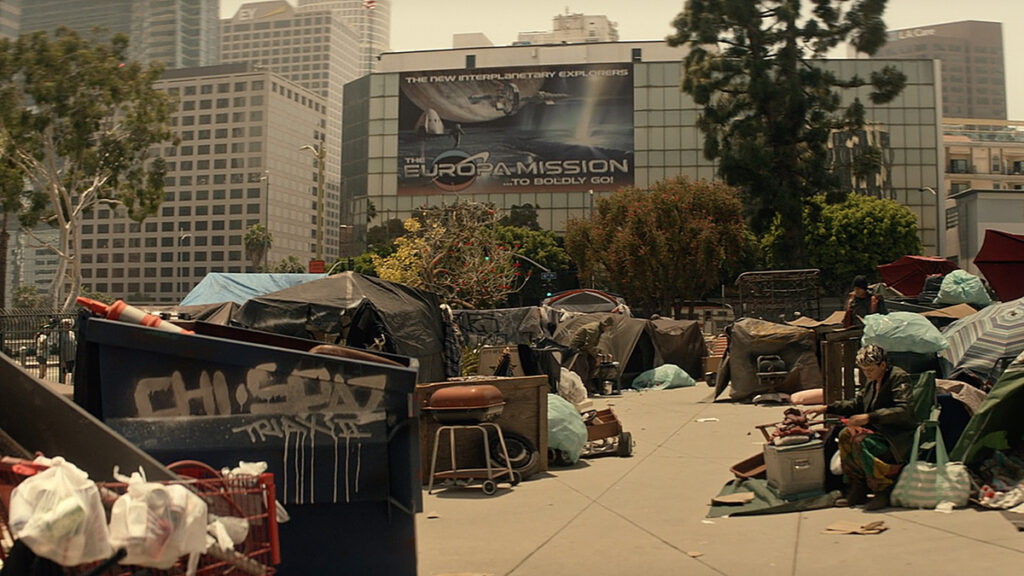
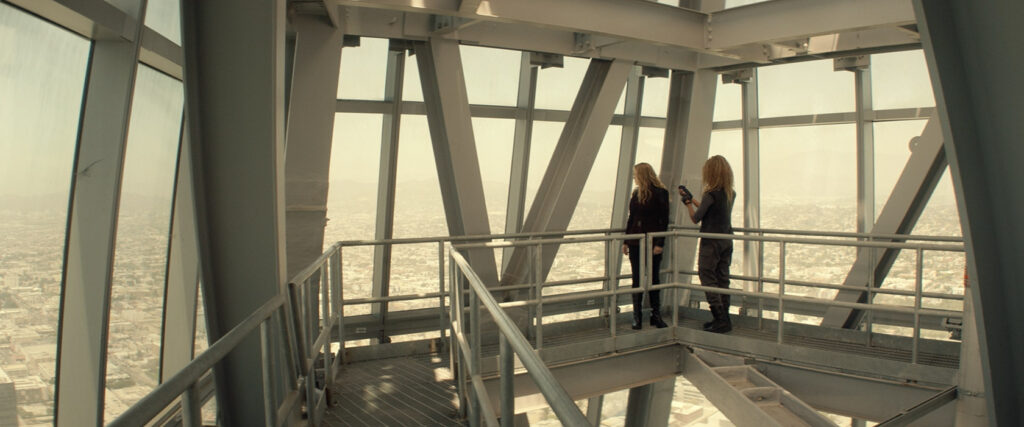
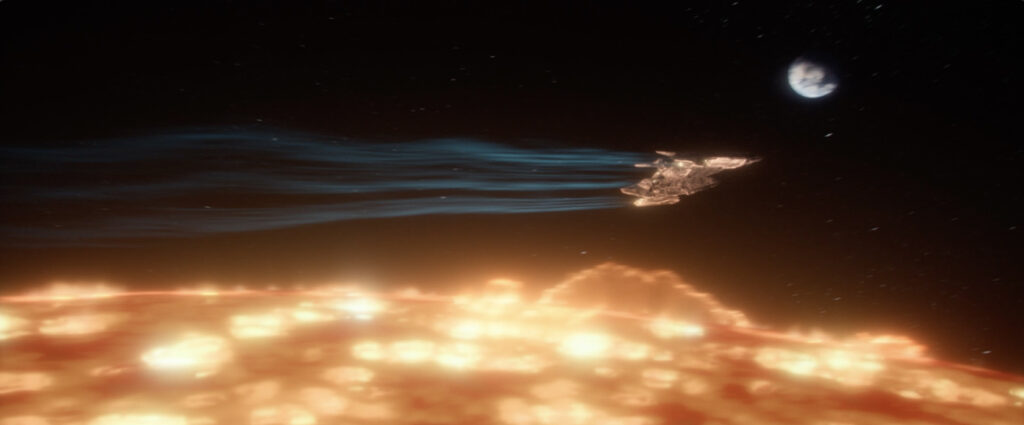
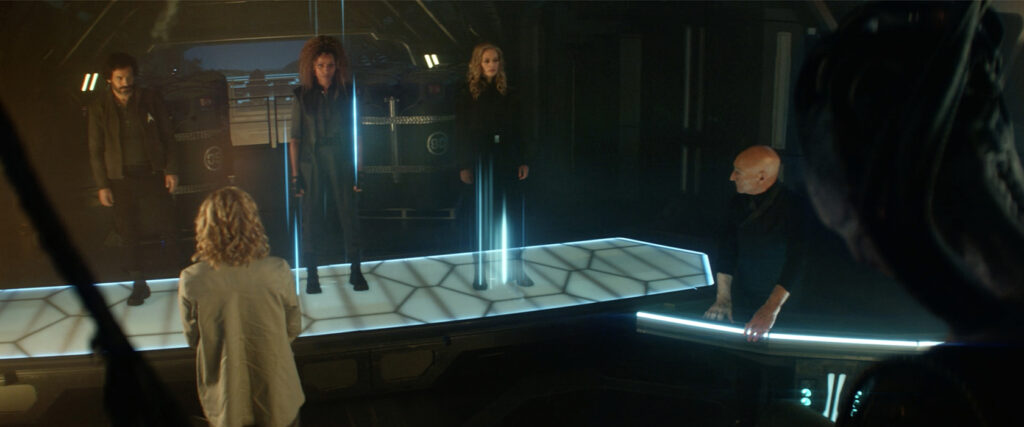
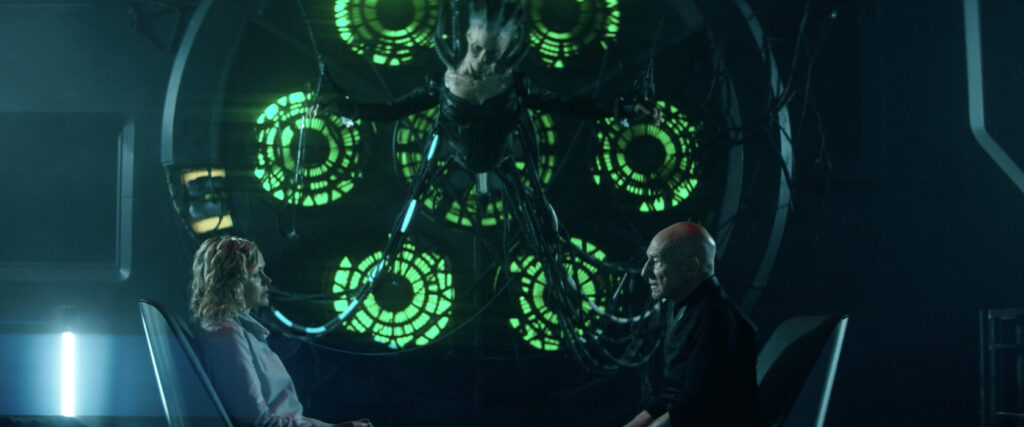
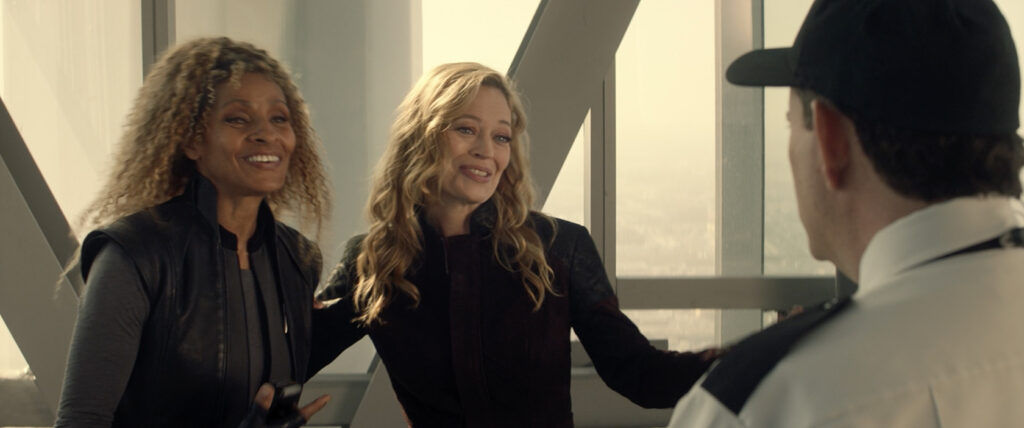

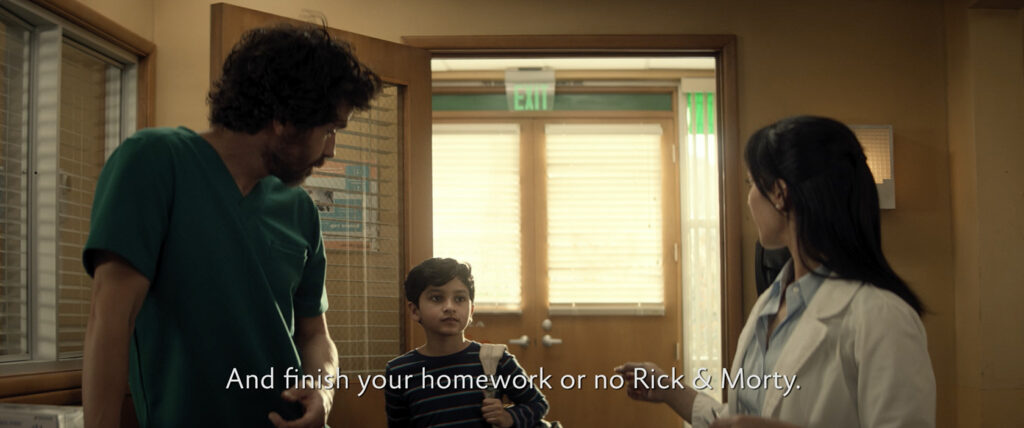
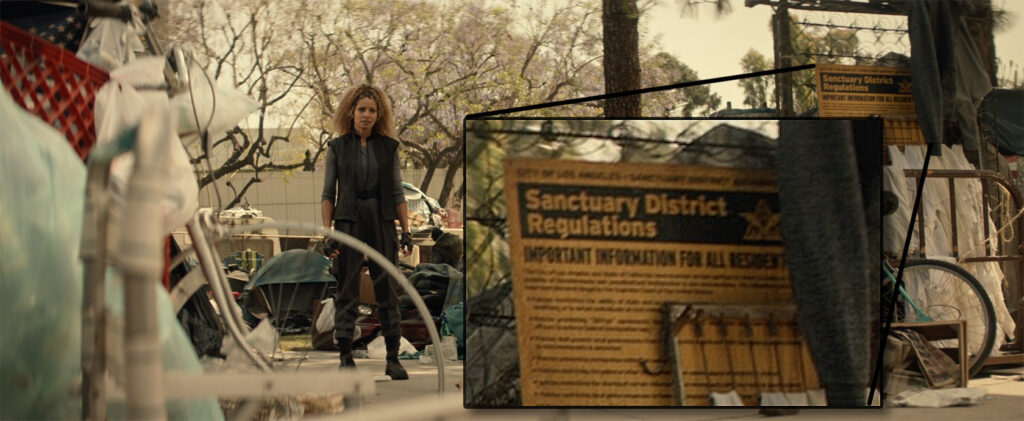
Agreed… AND, the most important reason to go back in time to a broadly contemporary period to when the production is made…
B.U.D.G.E.T.
Less sets to build, less green screen, less costumes, simpler post production…and sure set in LA, why not Paris, Lima, Oslo…
However….
I thought episode 2 was the best Trek Episode since it returned to our screens….Finally.
Bravo!
Location shooting in multiple places around Los Angeles can quickly blow through a budget, as well, Fran. Don’t think they’re skimping at all on Season Two.
At least Picard SHOWED US rather than spending time TELLING US, to pick up from your Discovery review!
The one thing that is truly different is the Borg queen’s role. I could see her thinking “I could start rebuilding the Borg in 2024 and eliminate all the nastiness I remember from the future”.
I was also impressed by the surprise Spanish interchange. Way to go. I imagine some Hispanic viewers going YES! FINALLY!
One other comment: I’m not bothered that the time-travel story “skeleton” has similarities as long as it’s “fleshed out” in interesting and dramatic ways.
I wasn’t complaining about the tropes…only pointing them out. The similarities of story elements are interesting to think about.